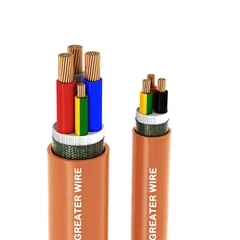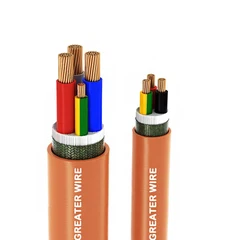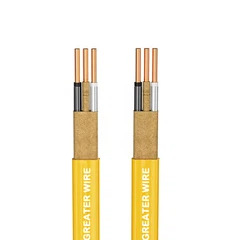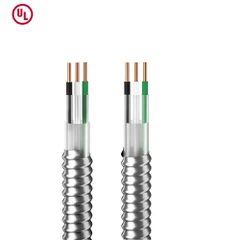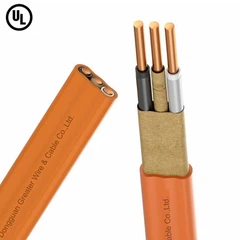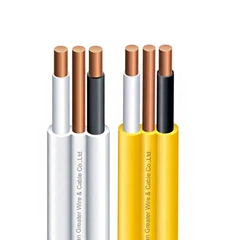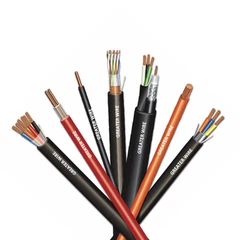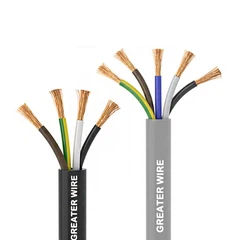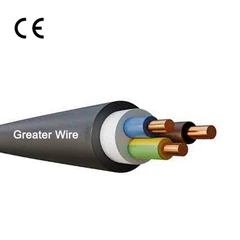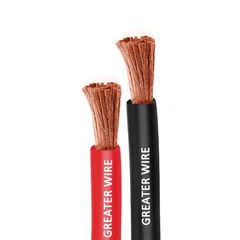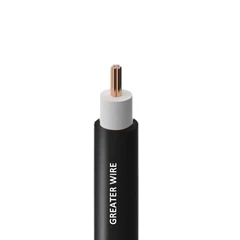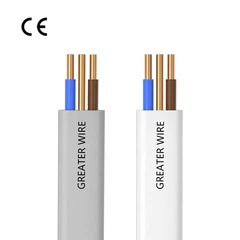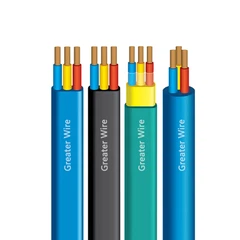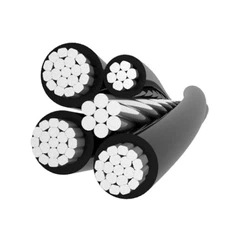Solar power systems have become an increasingly popular choice for homeowners and businesses looking to reduce their energy bills and carbon footprints. As more people seek energy independence, the demand for solar photovoltaic (PV) systems has skyrocketed. One of the most common questions potential solar customers have is, "How many solar panels do I need for a 6.6 kW system?"
This question depends on several key factors, such as the wattage of the solar panels, the location's sunlight hours, and other system components. Additionally, while the solar panels themselves are the most prominent part of the installation, essential components like solar cables and solar wires also play a vital role in ensuring the system operates efficiently and safely. In this article, we will explore how many solar panels are required for a 6.6 kW solar system, the factors influencing this calculation, and the importance of solar cables and solar wires in a solar power setup.

What Is a 6.6 kW Solar System?
A 6.6 kW solar system refers to the system's total electrical generation capacity. The "kW" stands for kilowatts, which is a unit of power. This means a 6.6 kW solar system can generate 6,600 watts of electricity per hour under optimal conditions (during peak sunlight hours).
The actual power generated by the system can vary depending on several factors, including:
The wattage of the solar panels
The sunlight hours your location receives
The efficiency of the panels
System losses from wiring, inverters, and other components
A 6.6 kW system is typically suitable for medium-sized homes or small businesses that have moderate to high electricity consumption. On average, a 6.6 kW solar system will generate about 24 to 30 kWh of electricity per day, depending on location, panel efficiency, and sunlight availability.

Factors That Affect How Many Solar Panels You Need for a 6.6 kW System
There are several key factors that influence the number of solar panels you need for a 6.6 kW system. These factors include the panel wattage, location and sunlight hours, panel efficiency, and system losses.
1. Panel Wattage
The wattage of solar panels refers to the amount of electricity a single panel can generate under optimal conditions. Most residential solar panels today range from 250 watts to 400 watts per panel. This factor is crucial in determining how many panels you will need for your 6.6 kW solar system.
For example:
If you are using 300-watt panels, each panel can generate 300 watts of power under peak sunlight.
If you are using 350-watt panels, each panel can generate 350 watts of power.
The higher the wattage of the panels, the fewer panels you'll need to achieve the same total power generation.
To calculate the number of panels needed for a 6.6 kW system, you can use the formula:
Number of Panels=System Size (in watts)/Panel Wattage (in watts)
For a 6.6 kW system, this becomes:
Number of Panels=6,600 watts/Panel Wattage (in watts)
2. Panel Efficiency
The efficiency of a solar panel refers to the percentage of sunlight that is converted into usable electricity. Solar panels come in different efficiency levels, and higher efficiency panels generate more electricity per square meter of space.
Monocrystalline panels: These are the most efficient type, with efficiencies between 18% and 22%.
Polycrystalline panels: These panels are slightly less efficient, with efficiencies around 15% to 18%.
Thin-film panels: These are the least efficient, with efficiencies ranging between 10% and 13%.
Higher efficiency panels can reduce the total number of panels required for a 6.6 kW system, though they may come at a higher upfront cost.
3. Location and Sunlight Hours
The amount of sunlight your location receives plays a crucial role in the performance of your solar panels. The number of sunlight hours per day will affect how much electricity your panels generate.
Sunny regions (e.g., Arizona, California, parts of Australia) typically receive more sunlight and can generate more electricity with fewer panels.
Cloudier regions (e.g., Northern Europe, Pacific Northwest) will generate less electricity, requiring more panels to achieve the same 6.6 kW system output.
To calculate the amount of energy you can generate based on sunlight hours, you need to know how many hours of direct sunlight your location receives each day. A common estimate for full sunlight hours ranges from 4 to 6 hours per day for most parts of the world.
4. System Losses
A typical solar system experiences some energy losses due to inefficiencies in components such as the inverter, wiring, and connections. On average, system losses can account for 10% of the total energy produced.
These losses must be factored into your panel requirements. So, to account for 10% system loss, you would need to generate 10% more power to make up for the energy loss.

Calculating the Number of Panels for a 6.6 kW System
Now that we understand the factors influencing the number of solar panels, let's calculate how many panels are needed for a 6.6 kW system, considering different panel wattages.
1. Using 300-Watt Panels
For 300-watt panels, we can calculate the number of panels required using the formula:
Number of Panels=6,600 watts/300 watts per panel=22 panels
Thus, you would need 22 panels of 300 watts each to achieve a 6.6 kW system under ideal conditions.
2. Using 350-Watt Panels
For 350-watt panels, the calculation would be:
Number of Panels=6,600 watts/350 watts per panel=18.86 panels
So, you would need approximately 19 panels of 350 watts each.
3. Accounting for System Losses (10% Loss)
If we factor in a 10% system loss, the total energy required becomes:
Adjusted Energy=6,600 watts×1.10=7,260 watts
Now, we recalculate the number of panels:
For 300-watt panels:
Number of Panels=7,260 watts/300 watts per panel=24.2 panels⇒25 panels panel
For 350-watt panels:
Number of Panels=7,260 watts/350 watts per panel=20.8 panels⇒21 panels
Thus, to account for system losses, you would need 25 panels of 300 watts each or 21 panels of 350 watts each.

The Role of Solar Cables and Solar Wires in a 6.6 kW System
Once you've determined how many solar panels you need for your 6.6 kW system, it's crucial to ensure that the electrical components, such as solar cables and solar wires, are properly installed to maintain efficiency and safety.
1. Solar Cables
Solar cables are specially designed cables that connect solar panels to the inverter, battery storage, and grid. These cables must be durable enough to withstand the harsh environmental conditions that come with outdoor installations, including exposure to UV rays, temperature fluctuations, and moisture.
TUV-rated cables: These cables are certified for use in solar applications, meaning they are resistant to UV degradation and extreme temperatures.
MC4 solar cables: The MC4 connector is one of the most commonly used connectors for solar panels. These cables provide a safe and secure way to connect panels in series or parallel configurations.
The cables must be sized properly based on the current produced by your solar panels. The current increases with the number of panels and the overall system size, so solar cables for a 6.6 kW system will likely require a wire gauge of 10 AWG to 6 AWG.
2. Solar Wire Gauge
The wire gauge refers to the thickness of the wire, which affects its current-carrying capacity. For a 6.6 kW solar system, the wire size used typically ranges from 10 AWG to 6 AWG:
10 AWG: This wire gauge is commonly used for shorter distances between the panels and the inverter.
6 AWG: For longer distances or higher current, a thicker wire like 6 AWG is used to prevent voltage drop and energy loss.
The wire gauge required for your system depends on the length of the wire runs, the total current the system generates, and the voltage at which your system operates. DC wiring (from the panels to the inverter) typically requires thicker cables than AC wiring (from the inverter to the grid or battery).
3. Ensuring Proper Wire Sizing and Installation
Incorrectly sized wires can lead to energy losses, overheating, or even fire hazards. It is crucial to work with a certified solar installer to ensure that the wire gauge is correct for your system's requirements.

